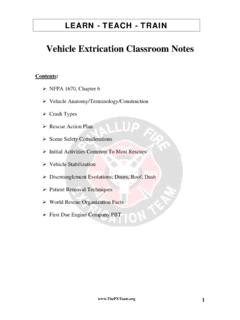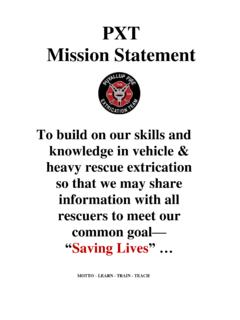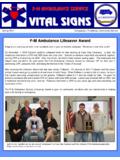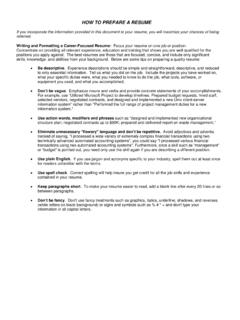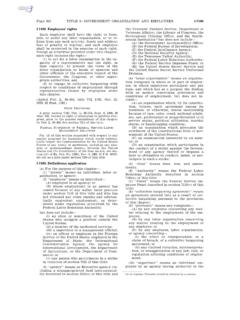Transcription of The Size Up – Paint the Picture - Firefighters Washington
1 The size Up Paint the Picture In last months article we covered crew and scene safety at a motor vehicle accident. In this article we are going to cover the size -Up and crew assignments. All of us have heard the typical size up at a motor vehicle accident (mva) that may be something along these lines . E-1 is on the scene of an MVA . What sort of Picture does this Paint for responding units and your dispatch? When there is a good size up the call always seems to go that much better. So why not Paint the Picture as if the responding units were seeing what you see? By painting the Picture and offering a solid size up your incoming units and dispatch will be better prepared to assist you with what needs to get done.
2 Once the size up has been completed, with additional to follow assignments need to be given. With a three person company first on scene the following functions should take place;. Driver / Engineer: Parks defensively Places rig in pump Sets scene lighting and traffic warning devices per agency guidelines. Stages Basic stabilization and other extrication equipment Officer: Communicates direction/orders with crew BEFORE leaving the cab Provides a solid size up painting the Picture Performs the Outer (360) Circle Takes a TIC and flashlight Once outer is completed communicates updates over the radio Third: Performs Inner (360) Circle taking an extinguisher and one 4x4. Goes the same direction as Outer and behind them by 10' or so Communicates loudly his/her observations to the officer Let's take a minute to break down these rolls and functions; The Driver/Engineers functions are similar of that at a fire, multi tasking and staying ahead of the game.
3 We need to remember that at the scene of an MVA working as a team is crucial to the patient's outcome and the driver is a critical member of that team. Depending on what your rigs carry for extrication equipment things may differ from department to department referencing what equipment the driver will stage. In our department all of our rigs carry basic stabilization equipment, wood or plastic cribbing and step chocks. As we all know basic stabilization comes before advanced (if needed) and both come before you can perform your extrication plans. So part of the cache that the driver should stage is the basic stabilization items if available. The driver also needs to light the scene provide the necessary emergency warning devices such as flares, cones or signage alerting oncoming drivers of the accident scene.
4 Check with your department on what is accepted per your 's and policies. If mechanical extrication is needed the driver pulls a charged hose line for protection and suppression. The Officer while performing the Outer takes the TIC looking for patients that may have been ejected. They are also looking for hazards such as electrical and fluids that may be a hazard to the operation, the Inner circle person and the crews. They are also asking spectators if they were involved or if they saw the accident gathering information to assist in the call. If the call is at night a flashlight should also be taken. The Third provides the Inner circle which again is behind the Outer making sure NOT too touch the vehicle(s) involved.
5 This is due to the fact that all vehicles are considered energized until cleared by the Outer & Inner. The Inner takes an extinguisher and one 4x4 in the event the vehicle needs to be chocked and kept from rolling. The Inner is noting the number, position and condition of the patient(s) making sure to make verbal contact with the patients offering clear direction. If life saving measures need to be accomplished such as opening an airway by reaching through a window the Inner needs to accomplish this as rapidly as possibly. They need to let the Outer person know, working together so they can both assure the vehicle is not energized. Once these 360's have been performed the officer provides the necessary updates to all incoming units and dispatch painting even a better Picture while the inner is posted at the vehicle communicating with the patient(s).
6 At this point both the Inner and Outer work together to establish at least two extrication plans as well as to determine if rapid and or mechanical extrication is needed - something I will get into more in next months article. Stay safe out there. Extrication; The art of making space Jeff Pugh is a Lieutenant with Central Pierce Fire & Rescue in Pierce County. He is the president as well as one of the lead instructors of the Puyallup Extrication Team (PXT).. Jeff has 18 years on the job as a professional firefighter, 4 years as a volunteer and has been part of PXT since its inception (12 years). He has a strong background in technical rescue covering 15 years on his department's special operations team and serves as a Rescue Squad Leader for WA-TF-1.
7 The Puyallup Extrication team offers hands on extrication classes and is a mobile, DPSST certified, non profit company.
